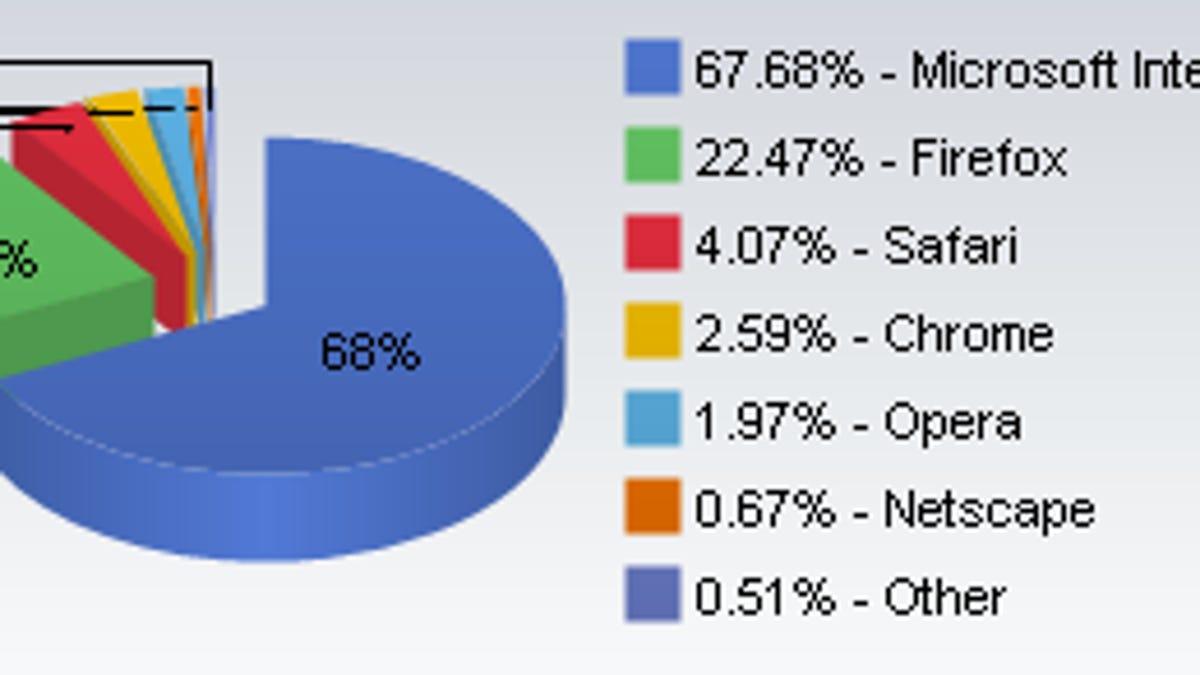Convulsion in browser share stats: Safari plunges
A change in how Net Applications measures browser share led to an apparent drop for Apple. Safari's growth, though, didn't change.

Apple's share of the installed base of Web browsers has plunged in half--but because of a methodology at a firm that produces the statistics rather than anything Apple or computer users did.
Net Applications, which compiles statistics based on the 160 million unique visits to a network of 40,000 Web sites using its analytics service, dramatically lowered Apple's browser share when the firm concluded its methodology needed refining. Specifically, the company concluded that there was a disconnect between visits to its site network and actual Web use in some areas such as China, said Vincent Vizzaccaro, executive vice president of marketing.
To try to better reflect reality, the company adjusted its statistics through use of the CIA's estimates of Internet population, according to its explanation. Consequently the company took a month to change course then released updated statistics from May and earlier that dramatically changed some figures.
With the old statistics, Apple's Safari had 8.43 percent of the May browser market. In the revised tally, Apple dropped to 3.7 percent. The change reveals how dramatically assumptions and other subtleties can affect such measurements--and how much faith you should place in their accuracy.
The good news for Apple is that Net Applications says its growth rates weren't affected by the change, and Safari is headed upward. In the July measurements, which were released only with the revised methodology, Safari has 4.07 percent share.
Opera came out ahead because the revised technique gave more weight to countries in Eastern Europe and Asia, Net Applications said. Its May share increased from 0.72 percent to 2.06 percent with the revised method, but its July share dipped to 1.97 percent.
Google's Chrome got a smaller boost from 1.80 percent to 2.18 percent for May, but its trajectory is upward: for July, it jumped to 2.59 percent.
The top two browsers, Microsoft's Internet Explorer and Mozilla's Firefox, saw relatively small changes. For July, they had 67.68 percent and 22.47 percent, respectively.

